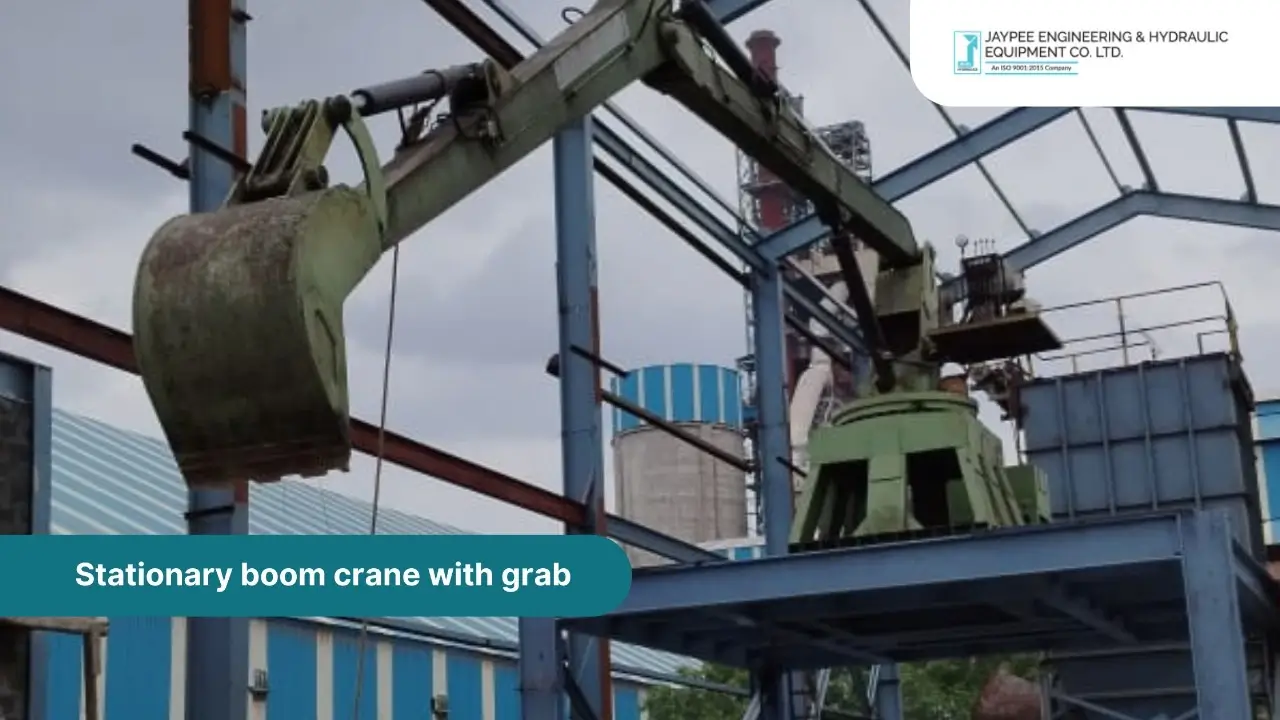In today’s high-volume industrial landscape, efficient handling of bulk materials is more than a convenience—it’s a necessity. The demand for faster turnaround, greater precision, and safer operations has transformed the machinery used across sectors. At the centre of this transformation stands the stationary boom crane, a stalwart of structured, heavy-duty lifting. When paired with a grab attachment, this immovable titan becomes an irreplaceable workhorse—designed to dominate the demands of scrap loading, port operations, and materials processing with unyielding strength and consistency.
Understanding the Stationary Boom Crane
Unlike its mobile counterparts, a stationary boom crane is anchored firmly to the ground, platform, or structural foundation. Its primary virtue lies in its permanence. This fixed nature allows the crane to withstand continuous heavy loading cycles without succumbing to structural fatigue. The core assembly includes a hydraulic boom, rotating column, operator cabin or control station, and a power pack unit.
Its articulated arms can pivot, extend, and elevate with refined motion—allowing precise maneuvering even in cluttered environments. This design eliminates the rolling instability seen in mobile cranes, offering unparalleled rigidity and control.
Functionality of the Grab Attachment
At the end of the boom lies its most utilitarian element—the grab. Acting as the claw of the beast, the grab is responsible for seizing, holding, and transferring bulk materials. Depending on the application, the grab may come in two dominant forms: the clamshell grab, perfect for fine aggregates and powders; and the orange peel grab, ideal for irregular, sharp, or bulky scrap like rebar and sheet metal.
These hydraulic or electro-hydraulic grabs open and close with synchronized finesse, reducing spillage and maximizing load cycles. Their cyclical speed and gripping force can be adjusted, making them versatile across both light and rugged materials.
Core Advantages of Stationary Boom Cranes with Grab
Operational Stability and Precision
With a rooted base and structurally balanced boom, stationary cranes offer inch-perfect control. Operators can execute repeatable load-unload cycles with minimal error—critical for continuous-feed operations like furnaces or conveyor-fed hoppers.
Energy Efficiency and Cost Control
Stationary boom cranes require less fuel or electrical energy compared to mobile solutions due to their stationary power infrastructure. With fewer moving parts and minimal transit motion, the energy-to-output ratio is significantly optimised.
Reduced Human Dependency
Dangerous manual material handling is all but eliminated. Operators remain in climate-controlled cabins or remote-control units, far from the dust, debris, or toxic exposure common in scrap and industrial zones. This not only enhances safety but reduces labor fatigue and injury downtime.
Industries Benefiting from Stationary Boom Cranes
Their adaptability has made stationary boom cranes indispensable across sectors. In scrap yards, they load and sort ferrous and non-ferrous materials swiftly. Ports and docks rely on them for unloading barges filled with coal, cement, or bauxite. In recycling plants, orange peel grabs sift through mounds of discarded metal and debris with surgical precision.
The cement industry utilizes these cranes to feed hoppers, while mining operations count on them for managing mineral ore stockpiles. Even power plants deploy stationary cranes to handle biomass, fly ash, or coal aggregates.
Design and Customization Considerations
To function optimally, a stationary boom crane must be tailored to its environment. Key design variables include boom reach, vertical lifting height, load-bearing capacity, and the slewing range (the arc in which it rotates). In automation-heavy environments, cranes can be integrated with programmable logic controllers (PLCs), proximity sensors, and joystick-based or touchscreen interfaces for semi-autonomous operation.
Weatherproofing, explosion-proof designs, and anti-corrosive coatings are also vital for cranes operating in extreme environments like coastal areas or chemical zones.
Maintenance and Lifecycle Performance
Like any mechanical giant, the longevity of a stationary boom crane hinges on meticulous upkeep. Regular hydraulic inspections, lubrication of pivot points, and sensor calibration are essential. Additionally, grab tines and hinge mechanisms should be checked for wear and aligned periodically to prevent erratic gripping.
When maintained diligently, these cranes can operate reliably for decades, delivering consistent ROI with minimal unscheduled downtime.
Conclusion
As industries scale, the need for reliable, high-capacity, and low-risk material handling continues to grow. The stationary boom crane—especially when outfitted with a specialized grab—is not merely a piece of equipment. It’s an industrial guardian. It lifts, sorts, loads, and repeats—with precision that borders on mechanical poetry. Whether in the harsh glare of a metal yard or the dusty expanse of a cement terminal, its presence marks a commitment to operational excellence.


